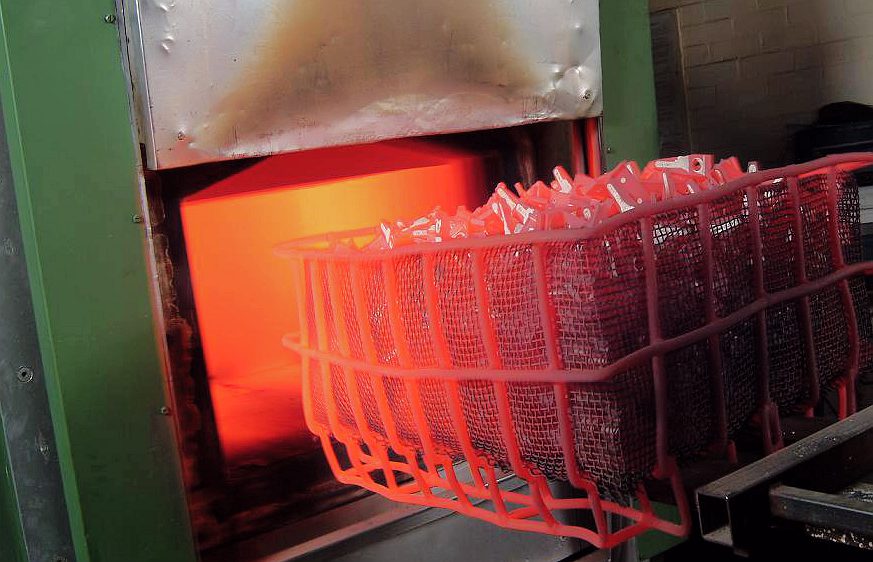Heat treatment is the process of heating or chilling, normally to extreme temperatures to achieve desired result such as hardening or softening of the material. Different types of heat treatment affect CNC machined parts differently. In the below section, we shall explain how heat treatment can significantly enhance the alloy’s fundamental properties, including machinability, strength and hardness.
What does heat treatment do in CNC machining?
Heat treatment is an integral stage in CNC machining. Heat treatment in CNC machining includes the measured heating and cooling of the metal or other materials to attain the desired properties.
This heating process involves the alteration of four primary properties of the metal parts, including:
- Strength
- Hardness
- Ductility
- Toughness
However, it is true that not all the treatments for the various metal parts are equal.
One can quickly choose the ideal heat treatment depending on the composition of the material, part size, and desired final metal properties.
The primary purpose of performing this heat treatment in CNC machining is to attain the specific microstructure, which provides the parts with particular material properties.
When should this heat treatment be applied to the metal parts?
The heat treatment can be applied at several stages of the entire CNC machining process. This can be done before starting with the machining of parts after doing so.
-
Heat treatment before CNC machining
When a metal alloy with a standardised grade is requested, which is also readily available in that case, the service provider will machine the metal parts directly from the material.
-
Heat treatment after CNC machining
Several heat treatments may drastically enhance the material’s hardness and use it as a final step after forming. In such a case, heat treatment is applied after the CNC machining because the higher hardness diminishes the material’s machinability.
Common heat treatments and enhancements it does.
-
Annealing, tempering, and stress relieving.
This type of heat treatment involves the metal alloys heating to a higher temperature and then cooling at a slower rate. Annealing is generally applied to all the alloys, and before any further processing, these alloys are softened and enhanced in their machinability.
Tempering heats the alloy part at a lower temperature than annealing and is generally employed after performing the alloy steel and mild steel’s quenching. This helps in enhancing mechanical performance and diminishes brittleness.
Stress relieving includes the specific part’s heating to a higher temperature but lower as compared to annealing. This is generally done after the CNC machining process in order to remove the residual stress generated due to the manufacturing process.
-
Quenching
The quenching process includes the metal’s heating at a higher temperature followed by a swift cooling step by sipping the whole material in water or oil or exposing it to some cool air. The rapid cooling of the metal locks in the modifications in microstructure such that the metal experiences heat when heated up, resulting in materials with a higher hardness.
-
Aging or Precipitation hardening
Aging or precipitation hardening includes a three-step process where the material is heated first to a higher temperature, then quenched, and later heated to a lower temperature for a longer term.
This makes the alloy elements appear as different particles of varied compositions to distribute and dissolve perfectly, like sugar dissolves in water when heated. After performing the precipitation hardening process, the metal alloy’s hardness and strength enhance drastically.
-
Carburizing and Case Hardening
The case hardening process results in the metal parts remaining with higher hardness, whereas the underlying materials remain soft. It is a standard heat treatment of metals that includes mild heating steel into a carbon-rich environment and follows the quenching process to lock the carbon into a metal material matrix, enhancing the surface hardness.
Bottom Line!
Each heat treatment for a specific metal enhances its hardness and some other properties that a professional might only help with to understand and diagnose which one could help!
Think3D understands the technical know-how and delivers the best properties any metal can!
